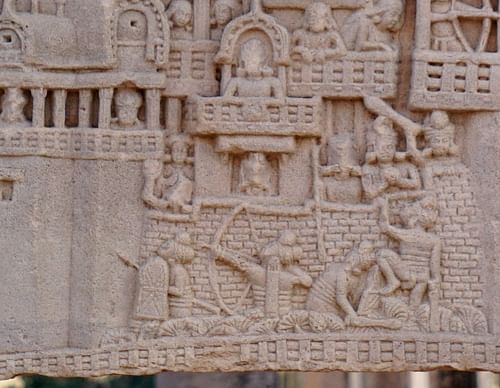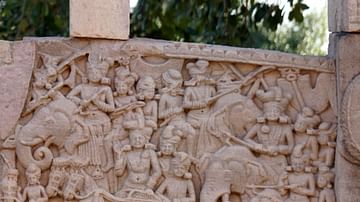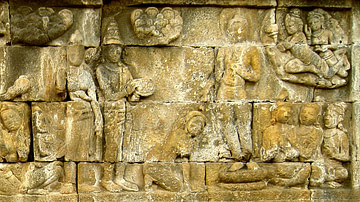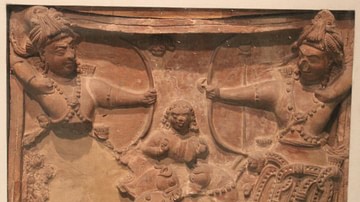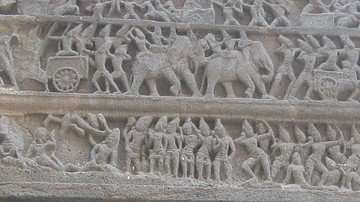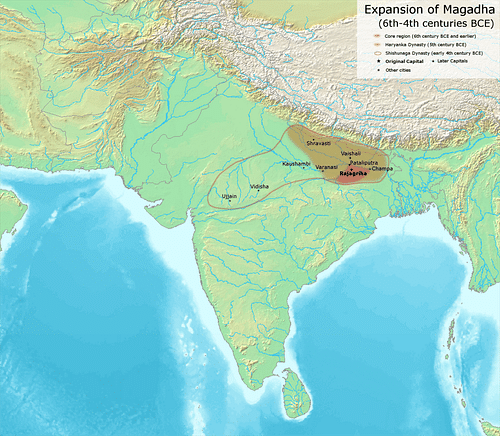
The Shishunaga Dynasty (also Sishunaga/Shaishunaga Dynasty) ruled the Magadha Kingdom in ancient India from c. 413 BCE to c. 345 BCE (in some sources from 421 BCE). It is said to be the third imperial dynasty of Magadha after the Brihadratha and the Haryanka, though the Brihadratha Dynasty is considered as mythical now. The first ruler of the dynasty was Shishunaga himself after whom it has been named, who came to power when the people revolted against the earlier Haryanka Dynasty in the 5th century BCE. The Shishunaga Dynasty had a very short reign before it was succeeded by the Nandas and then the Mauryas, but it too contributed to the solid foundation of the Magadhan Empire which was to dominate the Indian subcontinent for the upcoming centuries.
India Before the Shishunagas
After the Vedic civilization took its roots in the Indian subcontinent from around 1500 BCE, various political units rose in northern and northwestern India. This changed from the 6th century BCE onwards when some kingdoms rose to the east in the fertile Indo-Gangetic plains. During this time, the Indian subcontinent formed mainly into two political units – the Janapadas (which roughly means foothold of the common people) and the Mahajanapadas (the greater foothold of the people). There were 16 Mahajanapadas, and in the 6th century BCE, four out of them became very powerful – Kosala, Avanti, Vatsa, and finally Magadha. The ancient kingdom of Kosala falls roughly to some parts of the present-day Uttar Pradesh state in India. Avanti was Central India and now the states of Madhya Pradesh and Chhattisgarh, and Vatsa was also another part of modern Uttar Pradesh state.
The most powerful of them was Magadha, which would go on to dominate the entire subcontinent during the time of the Mauryas. All the polities close to Magadha except Avanti were defeated in battle and gradually annexed by the warrior king of Ajatashatru (r. c. 493/492 BCE - c. 462/460 BCE) of the Haryanka Dynasty. He also defeated the powerful confederation of the Vrijjis to the immediate north with their capital at Vaishali after 16 years of ancient Indian warfare from c. 484 BCE to c. 468 BCE. By the time Shishunaga ascended to the throne, Magadha, roughly corresponding to the present-day provinces of Bihar, Jharkhand, Uttar Pradesh, Odisha, West Bengal, and the countries of Bangladesh and Nepal, had a very effective system of administration and government, a powerful army and a flourishing trade network.
Shishunaga's Ascension
Not much is known about Shishunaga's life and childhood. The Buddhist accounts only say that he was a very efficient official of Magadha who surely would have impressed the citizens through hard work and honesty and hence rose to the pinnacle. The literature of those times gives a vivid background story of his rise to power. Before the Shishunagas, the erstwhile Haryanka Dynasty rulers were succeeded to the throne one by one through patricides from the time of the King Ajatashatru. This continuous internal family bloodshed angered the common people who deposed the last ruler of that dynasty, probably by the name of Nagadasaka, and chose the most qualified official of the kingdom.
Conquests
Shishunaga inherited the vast territory and the resources of Magadha. The region of Magadha, which is Bihar today is traditionally rich in mineral resources, iron ores to manufacture weapons, and jungles with its woods and elephants to help the army. Its fields too yielded enough crops to feed huge armies, and the Haryanka kings starting from the rule of Bimbisara, capitalized on this. Shishunaga further strengthened the Magadhan army during his time, and his greatest military achievement, which even surpassed his predecessors, was to successfully fight the Avanti Kingdom and vanquish them in the process. From Shishunaga's time, Avanti became a part of Magadha and the Pradyota Dynasty of Avanti ceased to exist.
Shishunaga was succeeded by his son Kalashoka, but not much is known about his military achievements. He must have basked in the glory of his father's conquests mostly. Kalashoka had ten sons who followed him but the records are very obscure. They were said to have divided the kingdom amongst themselves, instead of selecting one able brother to the throne. This considerably weakened the empire in the later years, and a quick downfall followed.
Religion
Ever since the advent of the Vedas after 1500 BCE, ancient Indian society had been divided into four main castes of Brahmins, Kshatriya, Vaishyas, and Shudras and turned into a sphere of influence of the Brahmins. However, since the concentration of civilization was mainly focused on the northwest at that time, the east of India remained outside the ambit of the Vedic corpus. This was probably the reason why other philosophies and thoughts developed mainly in this part of India. It is quite important to note that during the time of the politically and militarily aggressive Haryanka Dynasty, both Buddhism and Jainism took its deep roots in the east of the Indian subcontinent.
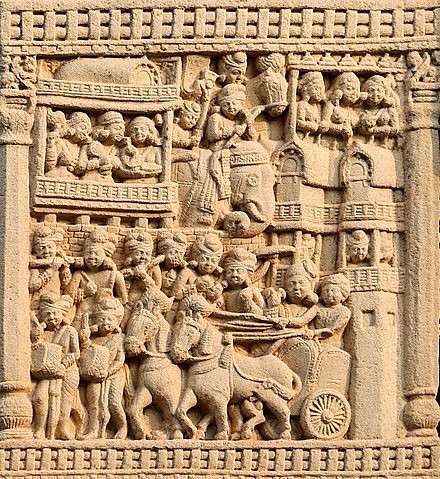
Both these religions preached peace and asceticism and ironically both were massively supported by the Haryanka rulers. The Magadha Empire continued their support for Buddhism, Jainism, Ajivikaism, and other faiths under the Shishunagas. The Second Buddhist Council took place in Vaishali during their rule (the first probably being held under the aegis of the Haryanka). Future Magadhan emperors continued to support Buddhism and Jainism, much to the consternation of the Brahmins. Though the Magadhan rulers did not oppose Hinduism, it could not take deeper roots there at that time.
Kalashoka's Rule
Not much is known now about the rule of Kalashoka. He initially served as the viceroy of the important city of Varanasi (Kashi) during his father Shishunaga's rule. However, other than the Second Buddhist Council which took place under his rule c. 383 BCE, his reign will also be remembered for the important incident of the final transfer of the Magadhan capital to Pataliputra (modern Patna), a fortified town developed once by Ajatashatru and his son Udaya. It was a time of fast Magadhan expansion, and Kalashoka must have continued the existing system of administration and military, with traditionally the four units of cavalry, chariots, infantry, and elephants.
Decline
The facts are more obscure towards the end of the Shishunaga Dynasty rule than in the beginning. The last Shishunaga king as per the Puranas of Hinduism was Mahanandin. Mahanandin was probably a grandson of Kalashoka; he may have been a son of Nandivardhan, who was one of the sons of Kalashoka, but whether he was one of Kalashoka's sons or a grandson cannot be ascertained without further archaeological evidence.
Tradition says that Kalashoka was brutally murdered by having a knife thrust in his throat by a Shudra, a low caste man who usurped the throne and formed the Nanda Dynasty. If this had indeed been true, it would not have been possible for his sons and his grandson Mahanandin to rule. Some of the Puranas also say that it was actually Mahanandin who was brutally murdered by a Shudra lover of his wife (who was probably assisted by the woman too). That Shudra lover formed the dynasty of the Nandas and became its first ruler by the name of Mahapadma Nanda. This is more likely to be true with Mahanandin as the last Shishunaga ruler. The Buddhist text 'Mahabodhivamsa' also gives the names of the ten sons of Kalashoka; Nandivardhan's name is also mentioned, who was probably Mahanandin's father.
Tradition also says that Mahapadma Nanda, also mentioned as Ugrasena Nanda, was an illegitimate son of the last Shishunaga ruler Mahanandin. Whatever the truth, it is now quite certain that around 345 BCE, the Shishunaga line came to an end. The Nanda Dynasty started with Mahapadma Nanda's rule and was later succeeded by the Mauryas who took the Magadhan Empire to its pinnacle.
Though the Shishunaga Dynasty was a short one and not much is known about them beyond Shishunaga himself, who rose through hard work and intelligence from the position of an officer in the empire, they helped in the process of making Magadha the most powerful kingdom in the Indian subcontinent which saw its greatest extent under Ashoka Maurya. Under the Shishunagas, as under other Magadhan dynasties, various philosophies and religions also flourished, especially Buddhism and Jainism. The rulers were also culturally inclined and supported various vocations. However, the dynasties also saw bloodshed, intrigues, politics, and treacheries. It was a time of change and upheavals, and the various rulers also gave an impetus to their following rulers to expand.
